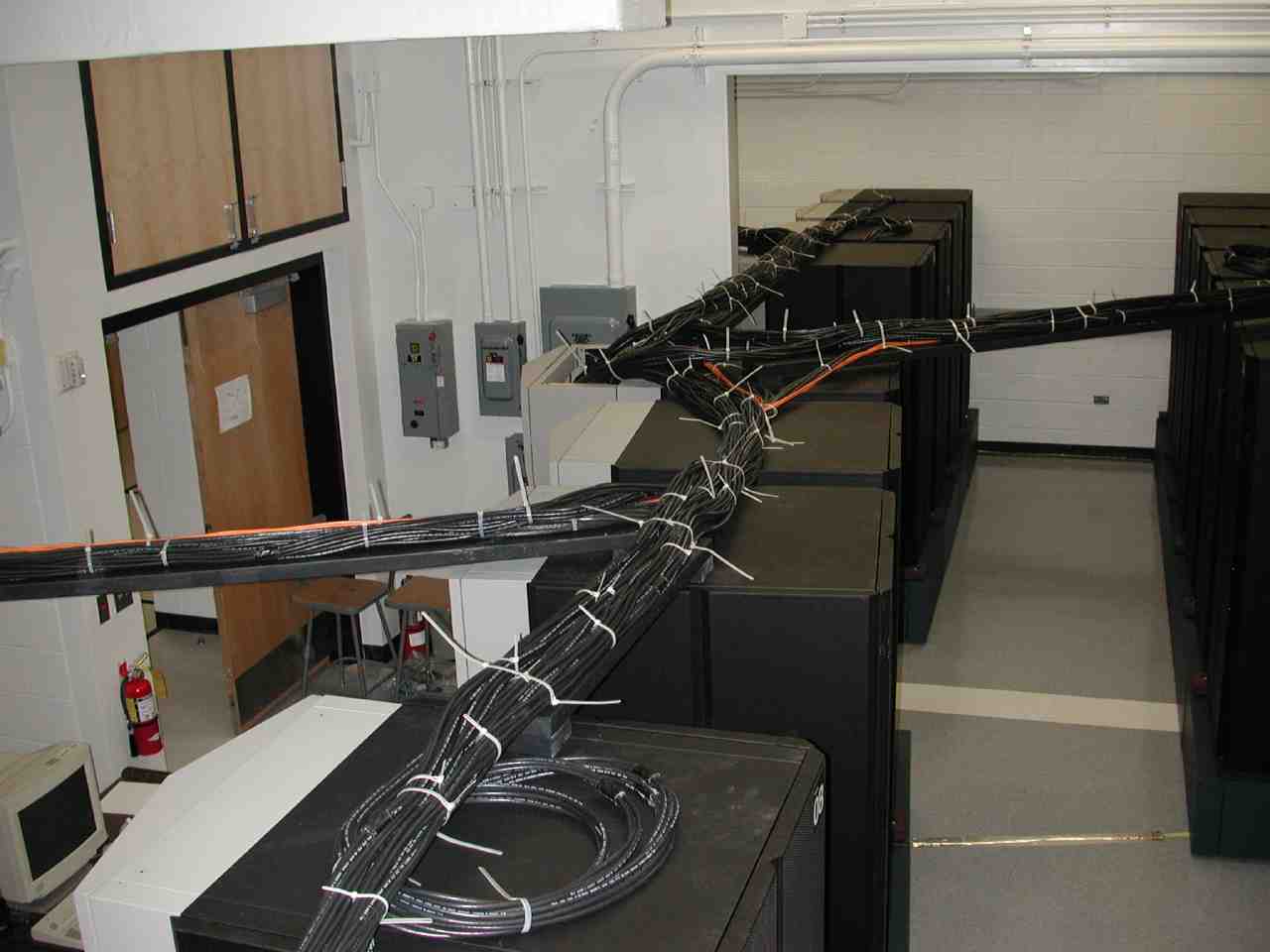


E-mail client configuration for laptops and mobil computing
E-mail at QTP
The QTP e-mail service is provided by:
- imap.qtp.ufl.edu for reading email with an IMAP capable client software like Thunderbird, MacOS emeil client, or Outlook. imap2.qtp.ufl.edu is a backup server.
- smtp.qtp.ufl.edu for sending email with a client that is capable of SSL and TLS like Thunderbird, MacOS emeil client, or Outlook. smtp2.qtp.ufl.edu is a backup server.
Inside the QTP network you can read e-mail with programs such as mailx, pine directly from CRUNCH or BUDDY.
More and more people prefer to use Thunderbird, MacOS emeil client, or MS Outlook to read their e-mail. People using laptops and desktops running Windows or Linux must use a program like that. The correct way to read e-mail with such a program is to configure the program to use the QTP IMAP server. To send e-mail, you must configure the SMTP server correctly as well.
NOTE: Since 2005, the QTP servers will no longer accept unencrypted access to POP or IMAP services from outside the QTP gateway. They will also not allow relaying from outside the QTP domain without autheticating with your QTP username and password over TLS/SSL.
You must enable STARTTLS or SSL on your server settings or you will not be able to connect. TLS (transport layer security) is the new name for SSL (secure socket layer). The QTP server sends a message to this effect, but most e-mail programs do not show this message to the user. They just sit there and get no new mail. See the sections on IMAP server and SMTP server below for details on how to setup your e-mail client correctly.
In each e-mail session, you will be asked for the incoming mail server password once and for the outgoing mail server once. Some e-mail clients allow you to remember the password, but that is not recommended, particularly for laptop computers. Because when your laptop is lost or stolen, the computer will have automatic access to your QTP or GatorLink accounts.
What will work?
- Netscape 7.x and Mozilla and Thunderbird will work with IMAP+STARTTLS. See above for instructions.
- Outlook Express 6.x will work with IMAP+TLS/SSL. Follow these or these instructions.
- Eudora 5.1 will work with IMAP+TLS/SSL. Follow these instructions.
What will not work?
-
Netscape 6.x does not have TLS/SSL for POP.
- Eudora 5.0 or older does not have TLS/SSL at all.
When you are connected to the QTP network from inside a
QTP office, the insecure POP3 and IMAP services will
continue to work, although it is recommended that you use
secure (TLS/SSL) connections.
IMAP server settings
QTP runs an IMAP email server. If you do not configure your browser correctly, you will loose e-mail at some point. The correct setting is as follows.
- Start netscape and select Tasks -> mail and news
-
The create a new mail account wizzard starts. Fill out
the following
- You name
- Your e-mail address
- Incoming server:
- Click on IMAP
- Type the server name imap.qtp.ufl.edu
- Fill in the user name at the server, which is your QTP account.
- Fill in the account name as it will be shown in the Netscape window. The default is your e-mail address. You can name it something more meaningful like "QTP account"
- Outgoing server:
- Type the server smtp.qtp.ufl.edu
- After the wizard completes, you must change some settings. Select Edit -> mail account settings.
- Now you can start reading e-mail. Click on the account and make it expand so the INBOX shows.
- Click on INBOX
- A windows pops up saying that a certificate was not recognized. Click on "Trust this certificate forever" and click on continue.
- Now the server asks for your password. Type you QTP password.
- Now you are ready to read e-mail.
SMTP server settings
When you are inside QTP you can use smtp.qtp.ufl.edu as SMTP server, because the server will relay mail when it comes from a host inside the QTP domain. But this will not work outside QTP, e.g. from home or when traveling. If you change the setting to one of the options below, your client will still work inside QTP, so it is recommended to pick one of the options below.
Then you have two options: You can use the campus server smtp.ufl.edu and your GatorLink userid and password or the QTP server smtp.qtp.ufl.edu and your QTP userid and password.
To enter the correct settings, you must edit your account settings under the proper menu of you e-mail client. The location differs slightly between Netscape, Thunderbird, Mozilla, Outlook. Once the account panel appears, select Outgoing SMTP server. You can edit the existing server smtp.qtp.ufl.edu and enable authenticated smtp and type in your QTP userid. You must also select the STARTTLS option which makes sure that you password does not pass through the network in plain text.
To use the campus server, the same setting must be used but now the server is smtp.ufl.edu and the user id is the GatorLink id.
Some Internet Service Providers, like Cox Cable staring May 19, 2006, block port 25. Then you either must use their server, or you must change the port in the panel from 25 to 587. Then you can keep using smtp.qtp.ufl.edu or smtp.ufl.edu.
For Netscape, Mozilla, Thunderbird, these options all appear on one panel. For Outlook, the panel is found by Tools -> Accounts...-> Mail -> Prpoerties and the password is entered under the servers tab, but the SSL options must be selected under the Advanced tab for both IMAP and SMTP servers.
More details on this setup can be found in the
UF help
database: Outlook and Thunderbird
Thunderbird e-mail client
Contributed by Sam Trickey
After installing Thunderbird on the new computer, avoiding having two "Personal Address Books" requires a bit of work. The online info at http://kb.mozillazine.org/Moving_address_books_between_profiles is not completely clear on this point.
On the old machine:
- In the existing Thunderbird select Address Book, select Tools, select Export. Export the "Personal Address Book" as file type ".ldif" Exit Thunderbird
- Transfer the "Personal Address Book.ldif" to the new computer.
On the new Vista machine:
- Make sure to exit Thunderbird.
- Under Start Search, enter %APPDATA%. It will find a folder called "Roaming".
- In "Roaming", open "Thunderbird", then "Profiles". Remove the file "abook.mab". Move the "Personal Address Book.ldif" to "abook.mab". Close.
- Restart Thunderbird. "Personal Address Book" now should contain the original addresses.
Spam control
E-mail that arrives through the campus SMTP server gets filtered by Barracuda. Email directly received by the QTP servers gets filtered by spam-assassin. Each user has a file $HOME/.procmailrc in their home directory that will redirect files that have been tagged as spam, i.e. a count higher than 5, to the spam filder, which is the file $HOME/mail/spam.
If you configured the IMAP server as described above with the correct IMAP server directory of mail, then you can subscribe to the spam folder (Thunderbird) or it will just show up (MacOS).
You can customize the spam control to process more complex rules for sorting your e-mail automatically, or you can change the spam redirection. You can remove the file .procmailrc and then all your email will go to your Inbox. Consult the man-page for procmail or CRUNCH or BUDDY for further details on how to write the .procmailrc-file..
Last Updated 8/18/09

